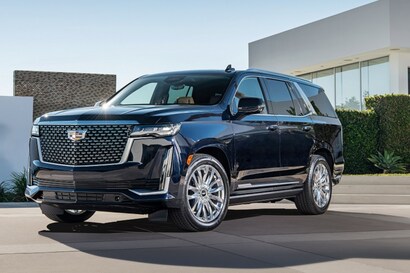Beyond Daily Yonder: Insights and Updates
Exploring daily news and insightful information from various fields.
Is Your SUV Out to Get You? Probably Not!
Uncover the truth behind SUV myths! Is your vehicle really a threat? Join us as we debunk the fears and reveal the facts!
Understanding SUV Safety Features: Myths vs. Reality
When it comes to SUV safety features, many common misconceptions can lead to confusion among potential buyers. One prevalent myth is that all SUVs are inherently safer than smaller cars due to their size and height. While it's true that SUVs often provide better visibility and may have a higher ride height, this doesn't automatically translate to superior safety. In reality, the safety of an SUV heavily depends on its design, weight distribution, and the effectiveness of its safety features. Understanding the factors that contribute to a vehicle's safety can help consumers make more informed decisions.
Another myth surrounding SUV safety features is the belief that all models come equipped with the latest technology, such as advanced driver-assistance systems (ADAS). While many modern SUVs do offer a suite of safety technologies such as lane-keeping assist and automatic emergency braking, not all vehicles are created equal. Buyers should not assume that these systems are standard across the board; checking the specifications of individual models is crucial. By debunking these myths and focusing on the reality of SUV safety features, consumers can better navigate the options available to them and ultimately choose a vehicle that truly prioritizes safety.

Are SUVs Really More Dangerous? Debunking Common Misconceptions
The debate over the safety of SUVs often centers around common misconceptions that paint these vehicles as inherently more dangerous than their smaller counterparts. Many critics argue that SUVs are more prone to causing severe injuries in accidents due to their larger size and weight. However, studies have shown that the **totality of an accident's circumstances**, such as speed, other vehicles involved, and driver behavior, play a much larger role in determining the outcome of a crash. In fact, modern SUVs come equipped with advanced safety features, including electronic stability control, anti-lock brakes, and multiple airbags, which can significantly mitigate the risks of accident-related injuries.
Another prevalent misconception is that SUVs pose a greater risk to pedestrians and other road users. While it's true that larger vehicles can result in more severe injuries to those outside the vehicle, it's essential to consider that driver awareness and caution are key factors in preventing accidents, regardless of vehicle size. Many SUVs now incorporate technology designed to enhance visibility and alert drivers to potential hazards, such as pedestrian detection systems. Ultimately, the narrative that SUVs are categorically more dangerous overlooks the nuances of vehicle safety and driver responsibility in accident scenarios.
Top 5 Reasons Your SUV is Not Out to Get You
When it comes to driving an SUV, many people harbor misconceptions that these vehicles are more dangerous than they actually are. In reality, SUVs are designed with advanced safety features that prioritize the well-being of both the driver and passengers. For instance, modern SUVs are often equipped with stability control, anti-lock braking systems, and advanced airbag systems that work together to enhance safety on the road. Additionally, their larger size can provide greater visibility and a stronger presence on the road, helping drivers to navigate safely through various driving conditions.
Another reason your SUV is not out to get you is the focus on fuel efficiency and eco-friendliness in newer models. Manufacturers are increasingly implementing hybrid and electrification technology, making SUVs more environmentally friendly than ever before. By choosing a modern SUV, you can enjoy the benefits of ample space and comfort without compromising on fuel consumption. Furthermore, many SUVs now come with features like adaptive cruise control and lane-keeping assist, which help to make driving a safer and more relaxing experience.